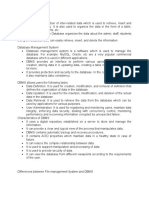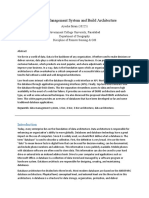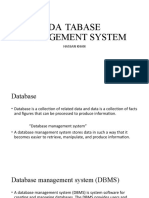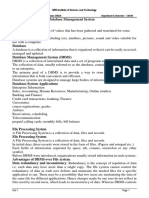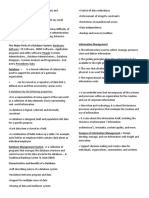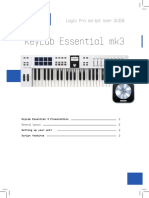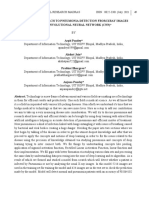0% found this document useful (0 votes)
32 views6 pagesADP-IV - Database-DBMS Vs File Based - Database Architecture
The document compares file systems and database management systems (DBMS), highlighting key differences such as data redundancy, backup capabilities, query processing efficiency, complexity, security, and cost. It also discusses database architecture, explaining its importance in data management and detailing three common models: one-tier, two-tier, and three-tier architectures, each with its own use cases and benefits. The three-tier architecture is noted for its security, scalability, and faster deployment advantages.
Uploaded by
Ch UzairCopyright
© © All Rights Reserved
We take content rights seriously. If you suspect this is your content, claim it here.
Available Formats
Download as DOCX, PDF, TXT or read online on Scribd
0% found this document useful (0 votes)
32 views6 pagesADP-IV - Database-DBMS Vs File Based - Database Architecture
The document compares file systems and database management systems (DBMS), highlighting key differences such as data redundancy, backup capabilities, query processing efficiency, complexity, security, and cost. It also discusses database architecture, explaining its importance in data management and detailing three common models: one-tier, two-tier, and three-tier architectures, each with its own use cases and benefits. The three-tier architecture is noted for its security, scalability, and faster deployment advantages.
Uploaded by
Ch UzairCopyright
© © All Rights Reserved
We take content rights seriously. If you suspect this is your content, claim it here.
Available Formats
Download as DOCX, PDF, TXT or read online on Scribd
/ 6

